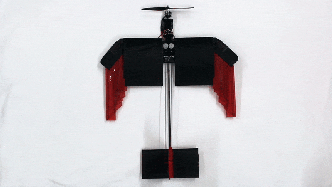
To steer the dragonflies, the engineersare developing a way of genetically modifying the nervous system of the insects so they can respond to pulses of light.
From navigating turbulence, to the sleeping midflight, to soaring without a sound, animals’ flight adaptations are helping scientists design better flying robot.

-Advertisement-
Airborne drones and the animals they mimic are featured in 18 new studies published online Dec. 15 in the journal Interface Focus. This special issue is intended “to inspire development of new aerial robots and to show the current status of animal flight studies,” said the issue’s editor, David Lentink, an assistant professor of mechanical engineering at Stanford University in California.
Though humans have been building flying machines since the 18th century, these new studies revealed that there is still much to be learned from looking closely at how birds, insects and bats take flight, keep themselves aloft and maneuver to safe landings.
“Most people think that since we know how to design airplanes, we know all there is to know about flight,” Lentink said. But once humans could successfully design planes and rockets, they stopped looking as closely at flying animals as they had in the past, he added.
Flying robots like drone are rapidly becoming a common sight worldwide. They are used to photograph glorious vistas from above, snap selfies and even deliver packages, as online retail giant Amazon completed its first commercial delivery by drone in Cambridge, in the United Kingdom, on Dec. 7, the BBC reported.
-Advertisement-
The R&D company Draper is developing an insect-control “backpack” with integrated energy, guidance, and navigation systems, shown here on a to-scale dragonfly model.
-Advertisement-
-Advertisement-
-Advertisement-
Source:Internet





